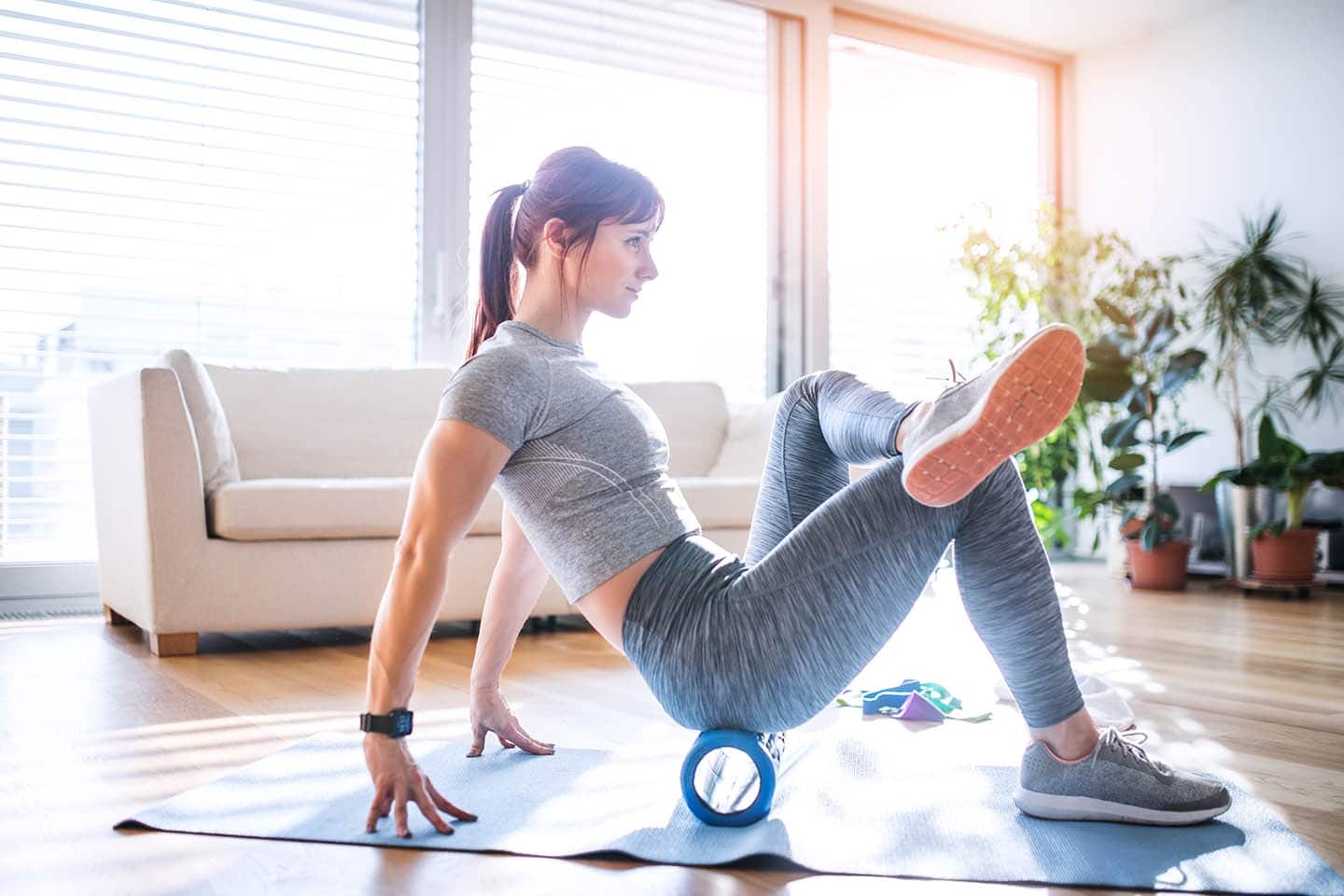There’s a sad irony in the modern era we live in – that most injuries are caused by a lack of activity, rather than strenuous exercise. We sit too much, we move too little. As such, the majority of the population will experience knee pain, back pain, and shoulder pain at alarming rates.
All from not being active. Sitting at a desk for 8+ hours a day, watching TV, and any of the other wholesome activities that are just part of life are actually turning your body into a flaming wreck.
Here is a quick guide that you can use to alleviate some of these common injuries, and get you back on track. Break out your trusty foam roller and let’s get started.
Knee Pain
Most people think that knee pain comes from too much running, too many squats at the gym, or too many sports. Now – all these things can be true. But it’s not because of the activities themselves. In fact, it’s probably because you are performing those activities with the knee in absolutely atrocious alignment.
And here’s the kicker – the knee doesn’t have anything to do with it. If you’re the average desk jockey or person who isn’t super active, the knee joint is merely guilty by association. Barring a severe injury like a ligament or meniscus tear, your pain is likely caused by dysfunctional hips and ankles. Do not foam roll the knee!
Hips
Foam roll your glutes. The glutes are the workhorse of the lower body, and when they get tight, uncool things happen. Focus on the glute medius – which is on the side of your hips. Try using a tennis ball or lacrosse ball for this, as the foam roller can be too cumbersome to get into the regions of tissue we need to explore.
Roll your quads. Do not get close to the knee itself. Avoid the IT band, you cannot foam roll it. Remember – don’t just roll back and forth on a muscle. Find a spot that hurts and stay on it for a bit until you feel the muscle relax.
Roll your hamstrings. Use side to side motions, not up and down. Nail your adductors while you’re down there.
Ankles
Do not roll the ankle joint itself. We want to focus on the calves.
Using side to side rocking motions, start at the top of the calf – right where it meets the hamstring. This area tends to get really knotted and gross.
Use the same motion on your Achilles tendon. This will be a bit more painful than the upper calf, but you have to push through it.
Foam roll these areas, and you’ll be on your way to telling knee pain to get lost. Remember that the knee itself is never really the problem – so don’t imagine that you can strengthen a joint made out of bone. You can’t.
Back Pain
Back pain is the most common and most debilitating pain that people experience and is sadly the result of sitting down too much. So to start, stop sitting so much. Get a standing desk. Anything.
When you sit for too long, you weaken your glutes, low back, and hamstrings. In turn, this also wreaks havoc on the knees and hips. Your hips are taking a tremendous beating every day you sit for 8 hours.
Hips: Follow the previously mentioned protocol for knee pain. These ailments often show up together. The hips are the epicentre of lower body dysfunction.
Low Back
Do not roll the lumbar spine. Use a lacrosse ball or tennis ball to hit the strip of muscle on your low back – called the quadratus lumborum. There’s a strip on each side that’s the perfect size for these balls. Find the “Sweet spot” and stay on it until you feel a change in tissue quality.
Back pain is a horrid affair. After you roll out your hips and lower back muscles, be sure that you strengthen your glutes using basic exercises like air squats and bridges. A weak butt is the number one cause of knee and back pain.
Shoulder Pain
Another unfortunate side effect of our cubicle-dominant lifestyles, shoulder pain, stems from the constant hunched-over posture a lot of us maintain while using computers, phones, or watching TV. Thankfully, the Rx is simple.
Foam roll your upper and mid back. Your trapezius muscles are likely weak and knotted from all your hunching. You need to unglue them. Lay on your foam roller and do “extensions” on your foam roller. Alternatively, duct tape two tennis balls together to make a “peanut,” which you can use to put between your shoulder blades. Do the extensions as usual.
Using a lacrosse or tennis ball, target your upper traps. These are the muscles right above the shoulder, next to the neck. Lay down on the floor with the ball on one side, and extend your arm overhead to “floss” the tissue.
Flip over and use the ball to smash the tissues of your pecs. The pecs get tight and pull your shoulders forward, which is an incredibly unstable position to be in. While lying face down on the floor, bring your arm above your head, and then out to the side. Making this motion will take the pecs through their anatomically designed function.
All of this might be a bit confusing and painful at first. Getting the movements down can be tricky, but once you really streamline the process, you can get the entire routine done in about 30-45 minutes. After you’re done ungluing tissue, be sure to stretch.
A final note here – and the most important point for anyone wishing to avoid chronic pain – maintain good posture throughout the day. Stop sitting so much. Don’t hunch. If you do this routine and go back to your best Quasimodo impression, your efforts will be in vain. Good posture = healthy joints and a pain-free existence. So stop slouching!
